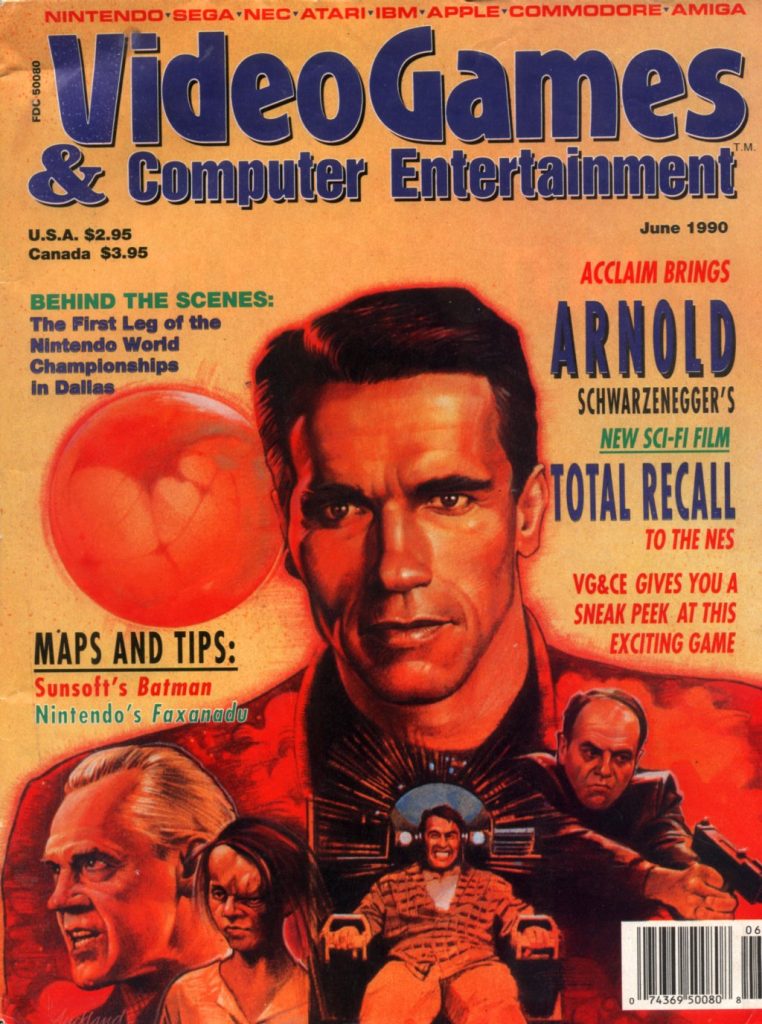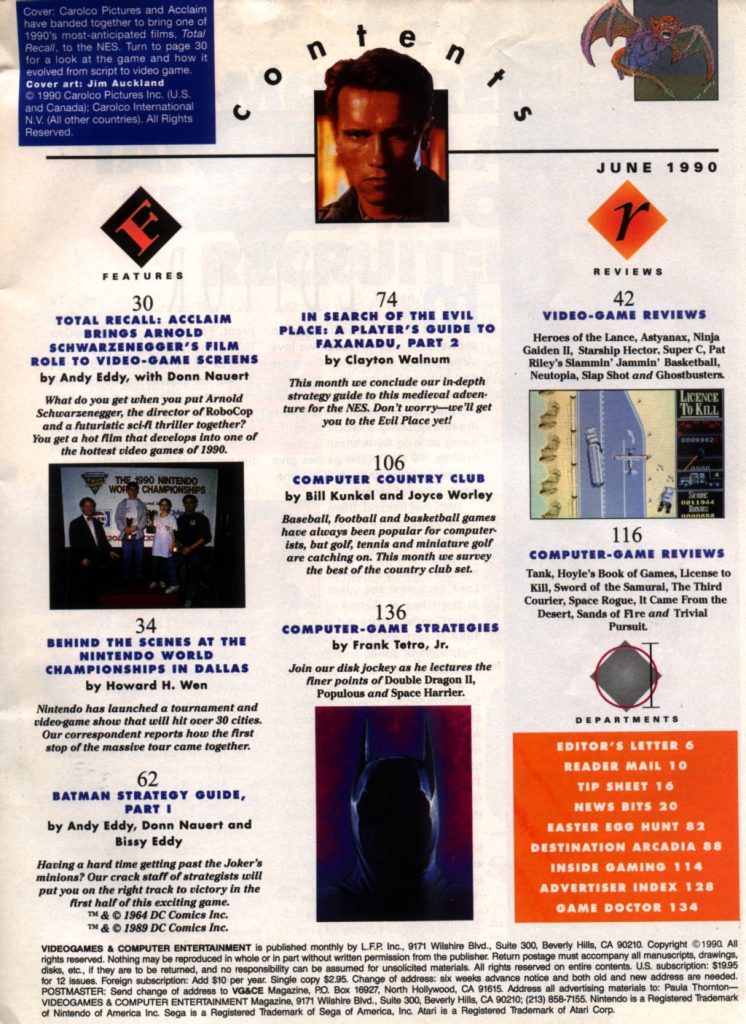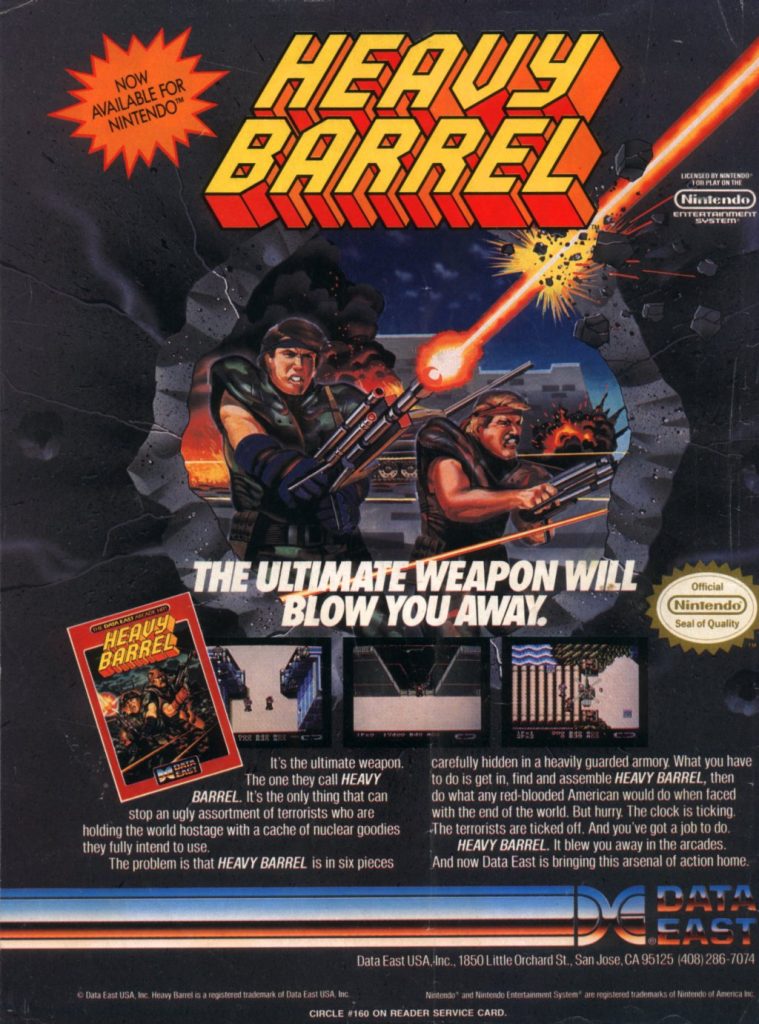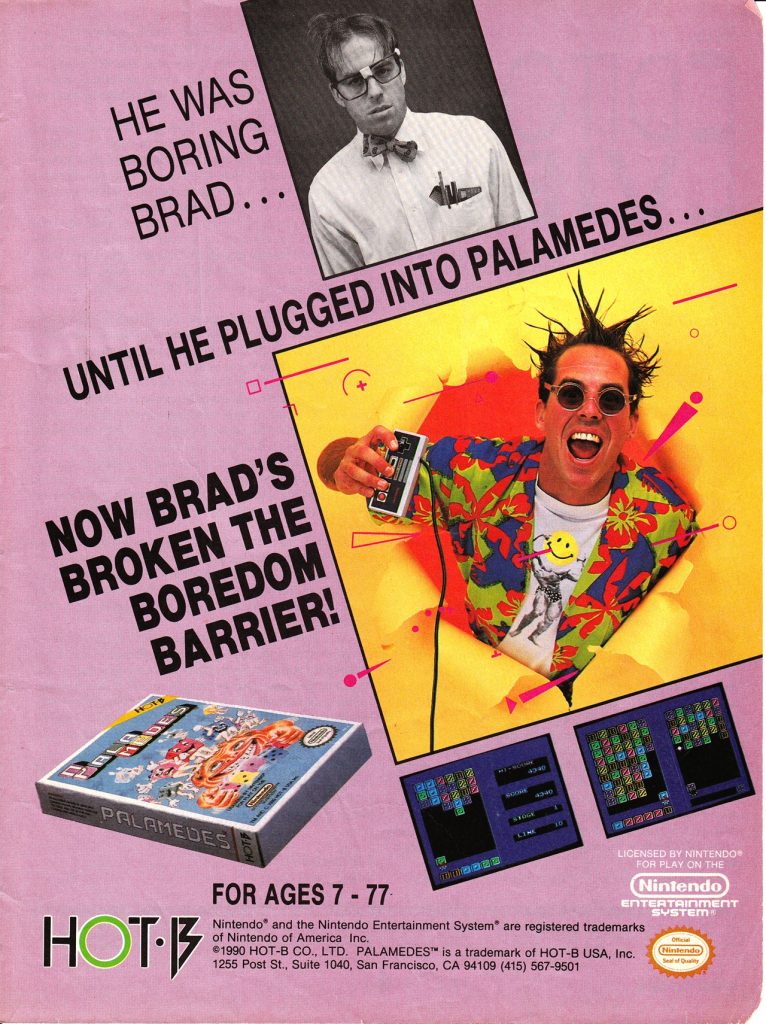
Palamedes is a relatively obscure puzzle game for the Nintendo Entertainment System that was released in 1990. It’s probably far more obscure than it really should have been as it was originally an arcade game by Taito and it is a fairly solid game for those that like the puzzle genre. It’s not terribly flashy and I think it just got lost in the shuffle in what was probably the most prolific time for the NES and probably puzzle games as well as Tetris had been released the year before.
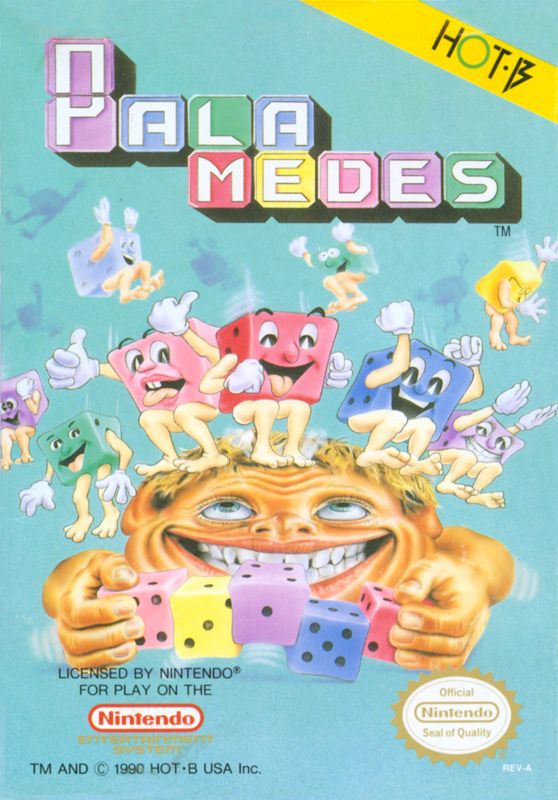
The basic concept of Palamedes is pretty straightforward: players must match dice faces to clear a stack of descending dice before they reach the bottom of the screen. The visuals are pretty simple and there are no fancy licensed characters which perhaps contributed to it being overlooked by many (but then the same can be said of Tetris), however the gameplay is what is important and that is pretty solid here. In Palamedes, you control a small character at the bottom of the screen. At the top, a wall of dice slowly descends. Your character holds a die that can be rotated to show any face from 1 to 6. By pressing the button, you can throw your die upward to eliminate a die in the descending wall by hitting it with a matching number.
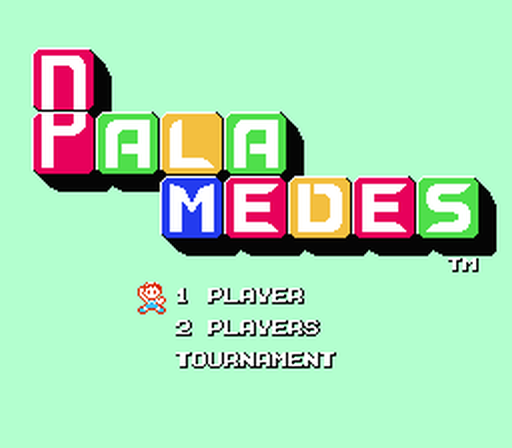
What makes the game a little more interesting is that players can perform combos by eliminating multiple dice in a row or in patterns, such as sequences (e.g., 1-2-3) or matching sets (e.g., three of the same number), which result in bonus points and can push the wall back, giving you more time to react. Essentially, you are trying to clear rows just as in Tetris but doing so in a different way. Another plus is the two-player split-screen mode. Like some similar puzzle games, as you clear rows on your side, they are added to your opponent’s side.
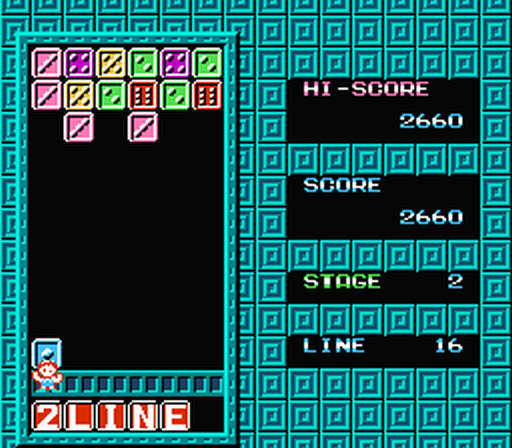
There are two keys to success in this game. The first is being able to quickly rotate the die your are throwing to the value you want. The second is being able to not only quickly identify simple matches, but patterns that can eliminate more dice from the top of the screen in one throw. The early levels are pretty easy but as the speed ramps up, it gets very challenging as you would expect. It can be said for many games, but playing another person is probably the most fun and gives the most replay value.
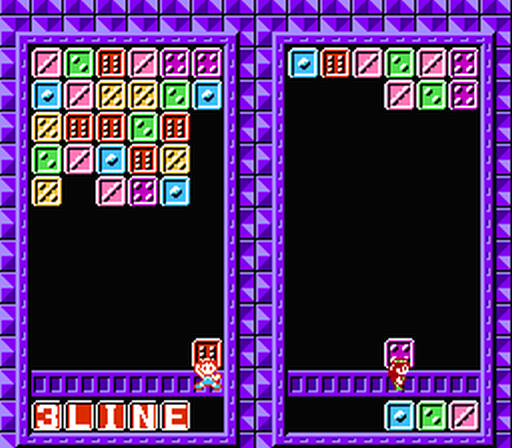
While generally viewed positively, even reviewers seemed to largely miss this game. Contributing to the game’s relative obscurity is probably the lack of anything resembling fancy graphics. The dice are easy to see and identify but very simple. Your avatar at the bottome of the screen is likewise fairly simple. I suppose the graphics are fairly colorful but other than that, there’s not much to say about them. Of course, Tetris was likewise very simple graphically but it first gained fame on the Game Boy where simpler graphics were more expected. One thing they definitly could have improved on is the music. It’s relatively simple, repetitive, and definitely not as catchy as Tetris (though your taste may vary). I doubt the box art helped sell the game either. However, neither the simple graphics or repetitive music (or box art) detract from what is pretty solid gameplay.
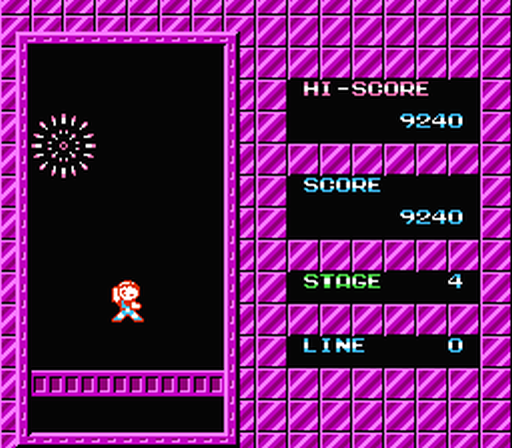
If you are a fan of puzzle games then this is definitely one you should check out and one you might have missed back in the day. The screen shots above are from the NES version but it was also released for the MSX, FM Towns, and Game Boy. If you want to play the NES version, this game can be had fairly cheaply especially if you don’t care about it being complete in the box. You can, of course, always emulate but then you probably might as well play the arcade version.
The ad above is from the March 1991 issue of Game Player’s.
